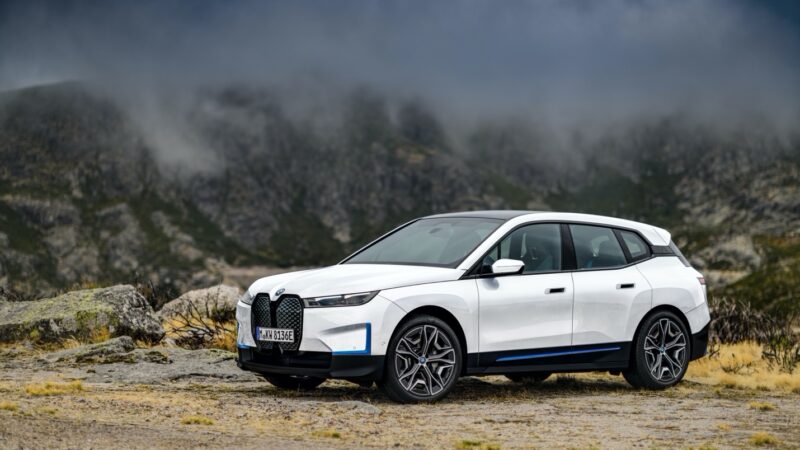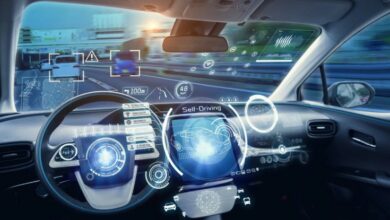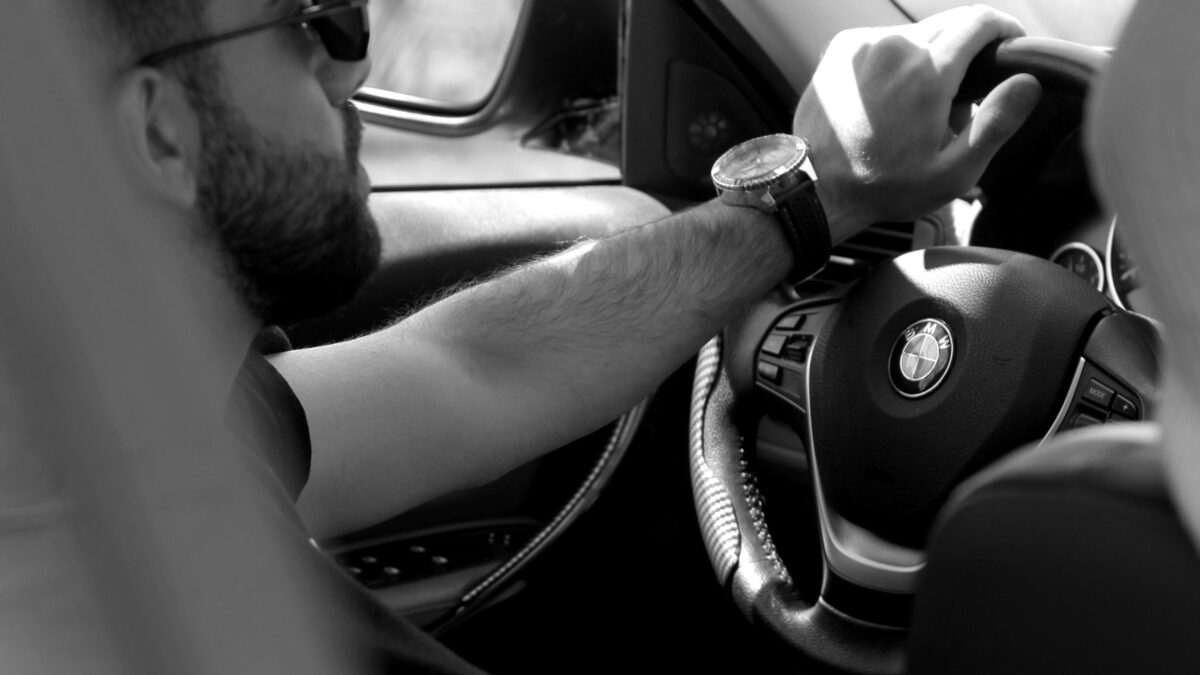
The new BMW iX xDrive40 and new BMW iX xDrive50.
The BMW iX heralds a new age in mobility. It combines trailblazing design and modern luxury with the latest innovations in automated driving, operation, connectivity and digital services. The BMW Group’s new technology flagship focuses on both locally emission-free driving pleasure – combined with the brand’s hallmark sporting ability, efficiency and convincing operating range – and an unwavering, integrated approach to sustainability applied from the ground up.
The most exacting environmental compatibility requirements have been put in place throughout the value chain and for the full life cycle of the BMW iX. The car is currently in the final phase of its series development. At market launch – which will get underway at the end of 2021 – customers will be able to choose from two model variants: the BMW iX xDrive50 and BMW iX xDrive40.
The BMW iX redefines the successful Sports Activity Vehicle (SAV) concept. It is the first model based on a new, modular, scalable toolkit on which the future of the BMW Group will be built. The development and production of the BMW iX follow an all-encompassing approach to sustainability involving compliance with strict environmental and social standards in the extraction of raw materials, plus the use of electricity from renewable sources and a high proportion of recycled materials in the mix.
“Technology is driving the advances we need to tackle even the greatest challenges. This applies in particular to climate protection,” says Oliver Zipse, Chairman of the Board of Management of BMW AG. “We are in no doubt: mobility has to be sustainable if it is to represent a truly outstanding solution. For the BMW Group, premium mobility is not possible without responsibility.”
“We made a promise and we will deliver on that promise: the market launch of the BMW iX will get underway at the end of this year with a two-pronged approach – in the form of the BMW iX xDrive40 and BMW iX xDrive50,” says Pieter Nota, Member of the Board of Management of BMW AG, responsible for Customer, Brands and Sales. “We have already set out the pricing for Germany. For example, the BMW iX xDrive40 will start at 77,300 EUR, which puts it at the level of a comparable BMW X5 with conventional combustion engine. Plus, our customers will now benefit from new additions to the range of vehicle functions that can be uploaded to their cars during ownership, and enjoy a seamless and extremely customer-oriented configuration process with personalised products and services.”
Monitored raw materials production, across-the-board green power for manufacturing, high proportion of natural and recycled materials.
The BMW Group procures the cobalt and lithium required for the high-voltage batteries from controlled sources in Australia and Morocco, before supplying them to the battery cell manufacturers. As in the production of the overall vehicle at BMW Group Plant Dingolfing, the battery cells are manufactured using exclusively green power from certified sources. And since February 2021 the company has bought in aluminium manufactured using electricity from solar energy plants. The importance placed on conserving resources in the production of the BMW iX is highlighted by the high proportion of secondary aluminium and recycled plastic used. The car’s interior features FSC-certified wood, leather tanned with olive leaf extracts and other natural materials. Among the raw materials used for the floor coverings and mats are recovered fishing nets.
“Rather than simply passing responsibility on to the supplier network,
we take responsibility together with our direct suppliers,” explains Dr Andreas Wendt, Member of the Board of Management of BMW AG, responsible
for Purchasing and Supplier Network. “In so doing, we tap into our many years of experience and create processes for attaining greater transparency and traceability.”
Electric motors: enhancing dynamism, reducing the use of critical materials.
Added to which, the electric motors for the BMW iX are marked out by a design which enables the use of rare earths to be avoided.
They work according to the principle of a current-excited synchronous motor. The excitation of the rotor in the BMW iX motors is not induced by fixed permanent magnets, but the feed-in of electric energy. This removes the need for the critical materials used to manufacture magnets, and the BMW Group is therefore not reliant on their availability.
This special design also has a positive effect on the motors’ performance characteristics. The precisely controlled excitation of the rotor using electric power enables peak torque to be on tap in full immediately on pulling away. And – unlike with electric motors of conventional design – that torque is maintained over an extremely broad rev band. The defining trait of the driving experience on board the BMW iX is, then, power development that is not only lightning fast but also unusually consistent, underscoring the car’s brand- typical sporting excellence.
In the BMW iX xDrive50, the drive system – which features one electric motor on the front axle and another at the rear axle – produces total output of over 370 kW/500 hp and enables acceleration of 0 to 100 km/h (62 mph) in under 5.0 seconds. The BMW iX xDrive40 has an output of more than 240 kW/300 hp, allowing it to sprint from 0 to 100 km/h (62 mph) in a shade over 6.0 seconds.
Efficient drive system and the latest battery technology increase range.
The electric motor, transmission and power electronics of the BMW iX come together as a highly integrated package within a single housing. This compact construction also benefits the drive system’s efficiency. Indeed, further boosted by optimised aerodynamics and intelligent lightweight design,
the BMW iX posts standout efficiency for its segment. The result is average electric power consumption in the WLTP cycle of less than 21 kWh per 100 kilometres (62 miles) for the BMW iX xDrive50 and under 20 kWh per 100 kilometres (62 miles) in the case of the BMW iX xDrive40.
Like the electric motors, power electronics and charging technology for
the BMW iX, its high-voltage batteries are also the product of fifth-generation BMW eDrive technology. They are positioned low down in the vehicle floor as an integral component of the body. The gravimetric energy density of the lithium-ion batteries has been increased by around 20 per cent again over the previous-generation battery.
The battery cells are manufactured according to precise specifications from the BMW Group and integrated into model-specific high-voltage batteries. The BMW iX xDrive50 is therefore fitted with a battery with a gross energy content of over 100 kWh at BMW Group Plant Dingolfing, while the battery unit for the BMW iX xDrive40 has a gross energy content of more than
70 kWh. This gives the BMW iX xDrive50 a range in excess of 600 kilometres (373 miles) in the WLTP test cycle. And the WLTP-calculated range of the BMW iX xDrive40 is more than 400 kilometres (249 miles). (All figures relating to performance, energy consumption and range are predicted values based on the car’s current stage of development.)
The new charging technology of the BMW iX enables DC (direct current) fast charging with extremely high charging power. The BMW iX xDrive50 can replenish its high-voltage battery at up to 200 kW, while the maximum charging capacity of the BMW iX xDrive40 is 150 kW. All of which means that a ten-minute plug-in time provides sufficient energy to add more than 120 kilometres (75 miles) / 90 kilometres (56 miles) of range. In both model variants, the high-voltage battery’s charge can be increased from 10 to 80 per cent of its full capacity in under 40 minutes.
New technology toolkit underpins further advances towards automated driving.
The new technology toolkit making its debut in the BMW iX also provides the platform for significant progress in the areas of automated driving and digital services. For example, the level of computing power has been developed to process 20 times the data volume of previous models.
As a result, around double the amount of data from vehicle sensors can be processed than was previously possible.
“We are setting new industry standards with the technology in the BMW iX. The iX has more computing power for data processing and more powerful sensor technology than the newest vehicles in our current line-up, is 5G- capable, will be given new and improved automated driving and parking functions and uses the high-performing fifth generation of our electric drive system,” says Frank Weber, Member of the Board of Management of BMW AG, Development.
Fresh design for a new driving experience.
The BMW iX is leading the way for a future generation of cars with which the company is redefining sustainability, driving pleasure and what it means to be premium. This trailblazing character is clearly expressed in the car’s design, which has been developed from the inside out. The BMW iX has therefore been created to provide quality of life and wellbeing for drivers and passengers.
The clear and minimalist design of its exterior showcases a new form of mobility geared squarely to the needs of the vehicle’s occupants. Its interior offers those on board innovative options for using the time during a journey – and enjoying relaxation, safety, security, and a new form of luxury in the process.
“The BMW iX shows how we can give new technologies a very modern
and emotional design. The car is technologically complex, but it feels very clear and uncomplicated,” says Adrian van Hooydonk, Senior Vice President BMW Group Design. “The BMW iX offers a mobile living space in which people will feel at ease, where the car’s intelligence is only there when you need it.”
All figures relating to drive system output, charging output, performance, energy consumption, emissions and operating range are provisional.
The electric power consumption and range figures are determined according to the European Regulation (EC) 715/2007 in the version applicable. They refer to vehicles in the German market. Where a range is shown, NEDC figures consider the different sizes of the selected wheels/tyres, while WLTP figures take into account the impact of any optional extras.
All values were calculated based on the new WLTP test cycle. Any NEDC values that are shown have been translated into equivalent NEDC measurements where appropriate. WLTP values are taken as the basis for determining vehicle-related taxes or other duties based (at least inter alia) on CO2 emissions as well as eligibility for any applicable vehicle-specific subsidies. Further information on the WLTP and NEDC measurement procedures can also be found at www.bmw.com/wltp.
Further information on official fuel consumption figures and specific CO2 emission values of new passenger cars is included in the following guideline: ‘Leitfaden über den Kraftstoffverbrauch, die CO2-Emissionen und den Stromverbrauch neuer Personenkraftwagen’ (Guide to the fuel economy, CO2 emissions and electric power consumption of new passenger cars), which can be obtained free of charge from all dealerships, from Deutsche Automobil Treuhand GmbH (DAT), Hellmuth-Hirth-Str. 1, 73760 Ostfildern-Scharnhausen and at https://www.dat.de/co2.







